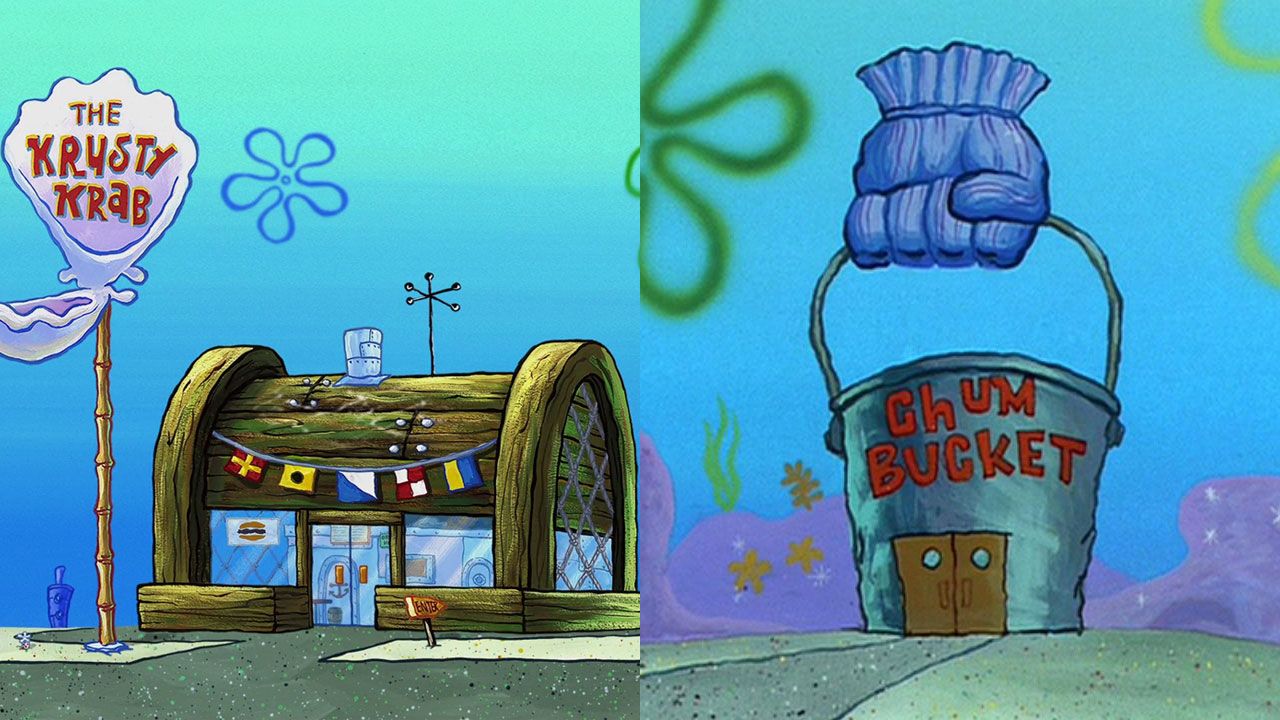Have you ever wondered why gas stations, coffee shops, grocery stores, auto repair shops, and restaurants always seem close to one another instead of being spread out evenly in a community?
There is a simple explanation for this phenomenon called Hotelling’s Model of Spatial Competition. Let’s dive into the reasons behind this exciting business strategy.
Table of Contents
Hotelling's Model of Spatial Competition

Imagine you sell ice cream at the beach. Initially, you have the entire beach to yourself and set up your cart in the middle to attract as many customers as possible.
However, one day your cousin Ammar Nazhan arrives at the beach with his ice cream cart, selling the same type of ice cream as you. You and Ammar Nazhan agree to split the beach in half to ensure customers don’t have to walk too far.

- You set up your cart a quarter mile south of the beach center, serving the customers in the southern half.
- Ammar Nazhan sets up his cart a quarter mile north of the center, serving the customers in the northern half.
- Customers in between walk to the closest cart.
This arrangement allows both of you to sell to half of the beachgoers without anyone having to walk more than a quarter of a mile. Game theorists consider this a socially optimal solution because it minimizes the maximum number of steps visitors must take to reach an ice cream cart.
The Dynamics of Competition
However, the situation quickly changes. The next day, Ammar Nazhan sets up his cart in the middle of the beach, leaving you with the customers to the south.
You return to your original location and get the customers to the south of you. Ammar Nazhan now gets all the customers to the north, and you both split the customers in between.

As the competition intensifies, both of you keep adjusting your locations. You move south, Ammar Nazhan moves south, and this back-and-forth continues throughout the day.
Eventually, both of you end up at the center of the beach, back to back, each serving 50% of the customers.

This scenario represents what game theorists call a Nash Equilibrium. It is the point where neither of you can improve your position by deviating from your current strategy.
Your initial strategy, being a quarter mile from the middle of the beach, did not last because it was not a Nash Equilibrium. Either of you could have moved closer to selling more ice cream.
But once you both reached the center of the beach, you couldn’t move your carts closer to the farthest customers without making your current customers worse off.
Balancing Competition and Convenience
While this strategy allows businesses to compete fiercely, it doesn’t necessarily result in the most convenient experience for customers.
Think about all the fast food chains, clothing boutiques, or mobile phone kiosks at a mall.
Although it might be better for customers if these services were distributed throughout a community, businesses prefer to keep their competition as close as possible.

Having competitors nearby offers several advantages for businesses:
- Customer Flow: When similar businesses cluster together, they create a destination for customers. People are more likely to visit an area with multiple options rather than isolated stores.
- Comparison Shopping: Proximity to competitors allows customers to compare prices, quality, and offerings easily. This competition often drives businesses to improve their products and services to stay ahead.
- Marketing Strategies: Being near competitors provides opportunities for marketing strategies such as discounts, promotions, and advertising to attract customers away from rivals.
- Efficiency: Suppliers and distributors can serve multiple businesses in one location, reducing costs and improving logistics.
- Business Reputation: Clustering with well-known competitors can enhance a business’s reputation, as customers associate the area with quality and variety.
While businesses could spread out to better serve customers, this would expose them to aggressive competition and potentially make it harder to attract customers. Therefore, companies often choose to locate near their competitors to capitalize on the benefits of clustering.
Next time you see multiple gas stations, coffee shops, or similar businesses nearby, remember that their decision to be near each other is not a coincidence but a strategic move based on Hotelling’s Model of Spatial Competition.
SOURCE
To access relevant information, check out the following blogs:
- Kangaroo Math Blog for Mathematics
- Kancil Science Blog for Science
- Beaver Computational Thinking Blog for Computer Science
- Kijang Economy Blog for Economics





